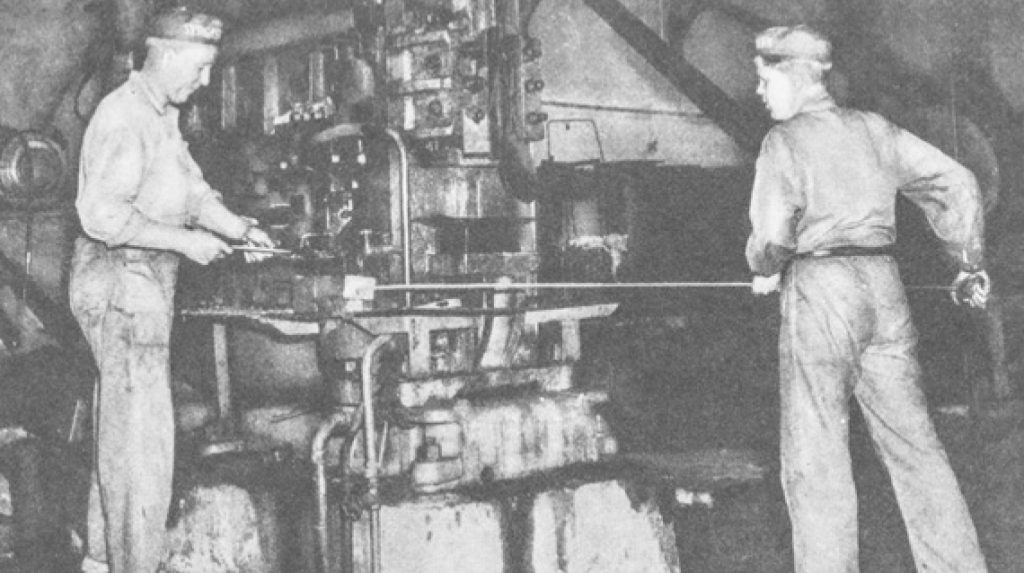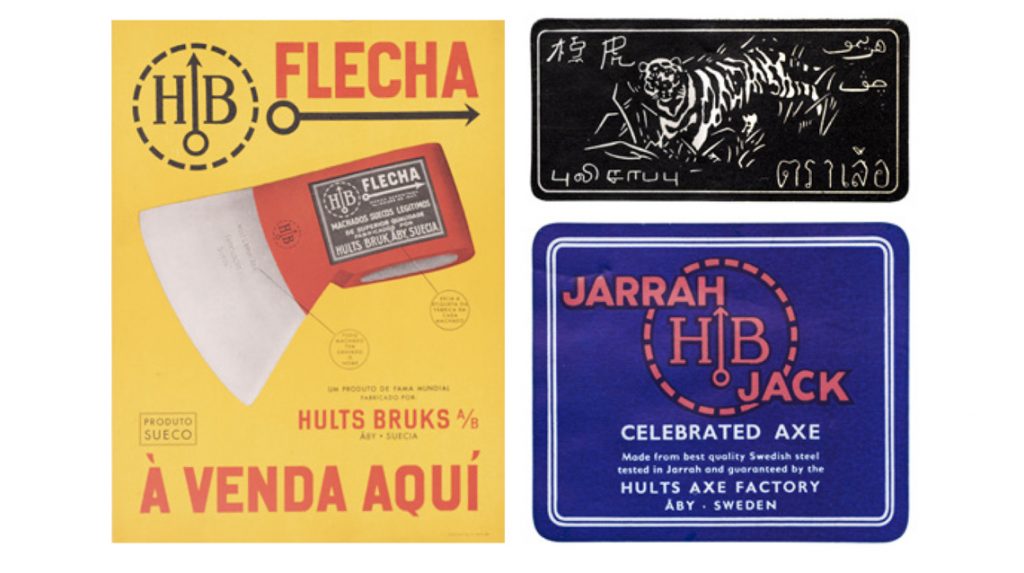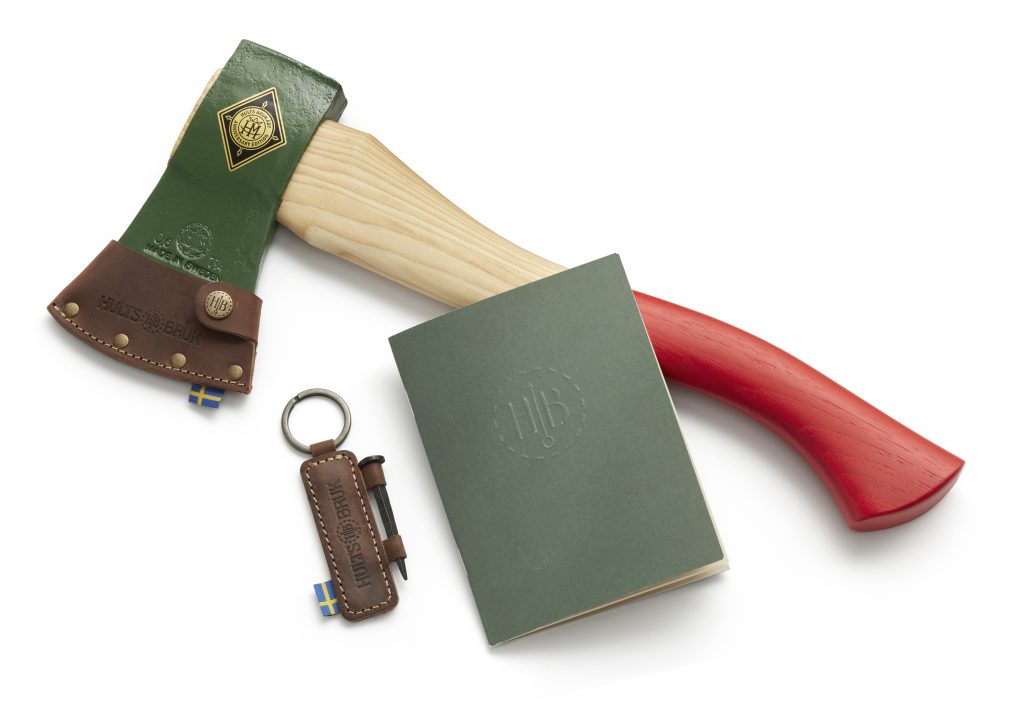
Hults Bruk was established in the Hult Valley of south-eastern Sweden in 1697. The location was carefully chosen, with forests that could provide wood to fuel the fires and water to power the hammers. The chosen location happened to be a center for stone age axe production. The ground is littered with ancient stone age axe heads, which archaeologists believe were manufactured on a nearly industrial scale here 5,000 years ago.
However, ship nails were the main product when our hammers first started working. The hand forged nails quickly became known for their high quality and were exported far beyond Swedish borders, just as our axes are still today. As in 1697, the blacksmiths’ craft is at the heart of it all, and the culture and character of exquisite Swedish ironworking survive.

For thousands of years, the axe has served as an extension of the human arm. With the aid of the axe, man has been able to navigate unspoiled nature, build dwellings, and butcher wild game. The axe has served as a survival tool while also providing freedom and independence. Those who possessed a sharp axe could always defend and prosper. Today, we no longer require the axe for survival, but it still aids us in a variety of practical tasks in everyday life, as well as assisting those who enjoy the outdoors to enrich their leisure time. Because the axe is part of our cultural heritage, the blacksmith plays an important role in both preserving the axe tradition for future generations and, more importantly, providing ultimate satisfaction and utility in the use of his axe.
Hults Bruk expanded over the centuries to include forged metal sheets and anchor chains, furniture and stove castings, and axes and spades used by farmers in the region for work in the forests and fields. Hults Bruk also produced railcars in the late 1800s. Axes had become an important part of Hults Bruk’s production by the 1870s. This was a turbulent time in Europe as the Industrial Revolution brought about changes. As a result of major developments in all aspects of society, demand for forestry products increased, as did demand for axes. To meet the demand, the owner of Hults Bruk at the time, an ironmaster named Ekelund, purchased two new axe forging machines in 1877. The reputation of Hults Bruk axes grew over time, and by the twentieth century, they were exported all over the world.

Hults Bruk axes have gone by several names, including “Flecha” in South America, “Jarrah Jack” in Australia, and “Tiger” in South East Asia. However, over time, Agdor emerged as the most widely distributed and enduring brand, and it has been a mainstay of the Hults Bruk axe range for nearly 100 years. The classic Agdor collection was inspired by late-nineteenth-century North American axe patterns. Agdor axes became the preferred choice for lumberjacks all over the world during a time when axes were the most important tools for the logging industry. Agdor axes were chosen for their exceptional steel and forging quality. The Agdor brand of axes became especially popular in areas with hard and difficult wood, with woodsmen willing to pay up to a month’s wages or more for an Agdor axe made on the other side of the world.

This axe commemorates Hults Bruk’s 325-year forging tradition. The style is based on some of our favorite Hults Bruk axe models from the past. Ekelund, the ironmaster, traveled to America in 1870. Not only did he bring back new production techniques, but also hickory handles and axe designs like the Montreal and Yankee patterns. These became some of our most popular and long-lasting axe models over time. With a gross weight of 1.25lb, the head of our Anniversary axe is a classic Yankee pattern, and the bit is finished with a premium grind. Hand-forged from Swedish quality steel, as is typical of Hults Bruk axes. We’ve added a hickory handle and a sustainably sourced leather sheath made in Sweden from vegetable tanned, full-grain leather. A key ring with a decorative and commemorative ship’s nail is included with the axe as a reminder of how our forging tradition began.
Our axes have been available in a variety of colors over the years. The anniversary axe model’s red and green colors are inspired by our Agdor collection, which debuted in 1930 and made Hults Bruk famous around the world. The green color was inspired by axes sold in Sweden in the mid-twentieth century, and the red handle was a common feature on many Agdor models in the latter half of the twentieth century.

The label and handle shape are inspired by some of the oldest documented axes from Hults Bruk, which were discovered in an 1890s catalogue. The label features an old logotype with the letters HM, which stand for “Hults Manufaktur.” When examined closely, each axe reveals its own unique craftsmanship. The rough forging surface gives each axe head its own distinct personality, making each axe one-of-a-kind.
